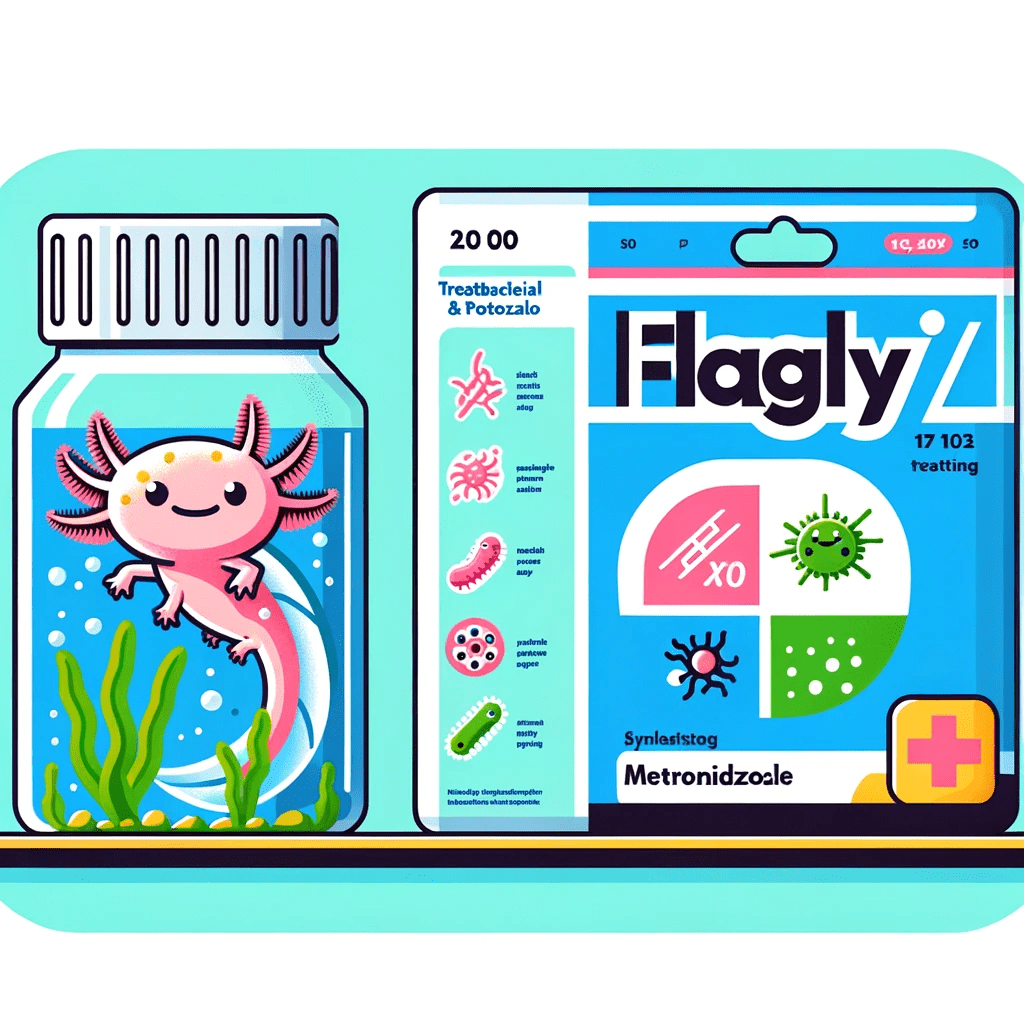Flagyl: An Essential Medication for Axolotl Health
Flagyl: A Comprehensive Treatment for Axolotl Ailments
When it comes to axolotl care, ensuring the health and well-being of these unique creatures is a priority for every owner. Facing challenges such as bacterial infections and protozoan parasites requires effective solutions. Flagyl, known scientifically as Metronidazole, offers a potent remedy for these issues. This blog post explores Flagyl, its applications for axolotls, and guidelines for its use.
What is Flagyl?
Flagyl (Metronidazole) is a widely used antibiotic and antiprotozoal medication. It’s effective against a range of anaerobic bacteria and certain parasites, making it a versatile option in both human and veterinary medicine. For axolotls, Flagyl is particularly useful for treating conditions like Hexamitiasis and other infections caused by anaerobic bacteria and protozoa.
Benefits of Flagyl for Axolotls
Flagyl’s efficacy in combating specific pathogens offers several advantages for axolotl health, including:
- Targeted Action: It directly addresses the root cause of infections, leading to rapid improvement in symptoms.
- Versatility: Effective against both bacterial and protozoan infections, Flagyl can treat multiple conditions, simplifying the treatment process.
- Safety: When dosed correctly, Flagyl is safe for axolotls, with minimal risk of side effects.
Using Flagyl Safely for Axolotls
To ensure the safe and effective use of Flagyl for your axolotl, follow these guidelines:
- Accurate Diagnosis: Confirm the presence of a bacterial or protozoan infection. Incorrect usage can lead to resistance and other complications.
- Dosage and Administration: The typical dosage for axolotls ranges from 250 to 500 mg per 10 gallons of water. It’s crucial to consult with a veterinarian to determine the precise dosage for your axolotl’s specific needs.
- Treatment Duration: Treatments usually last 5-10 days, depending on the severity of the infection. Observe your axolotl’s response to adjust the treatment plan as necessary.
- Water Quality: Maintain optimal water conditions throughout the treatment. High-quality water supports recovery and enhances the effectiveness of the medication.
- Post-Treatment: After completing the Flagyl treatment, perform water changes to remove medication residues, ensuring a clean and healthy environment for your axolotl.
Precautions and Considerations
- Veterinary Guidance: Always seek advice from a veterinarian experienced with axolotls before starting treatment with Flagyl.
- Use in Moderation: Reserve Flagyl for confirmed infections to avoid unnecessary exposure and reduce the risk of developing drug-resistant pathogens.
- Monitoring: Pay close attention to your axolotl’s behavior and health during and after treatment to ensure a positive outcome.
Conclusion: Enhancing Axolotl Care with Flagyl
Flagyl provides axolotl owners with a powerful tool for managing bacterial and protozoan infections, contributing to the health and longevity of these captivating amphibians. By adhering to proper usage guidelines and prioritizing the well-being of your axolotl, you can effectively utilize Flagyl to address health challenges, ensuring a thriving life for your aquatic pet.
Responsible axolotl care involves staying informed about potential health issues and knowing how to address them effectively. Sharing knowledge and experiences about treatments like Flagyl can help foster a community of well-informed and dedicated axolotl caregivers, promoting the overall well-being of these fascinating creatures.


